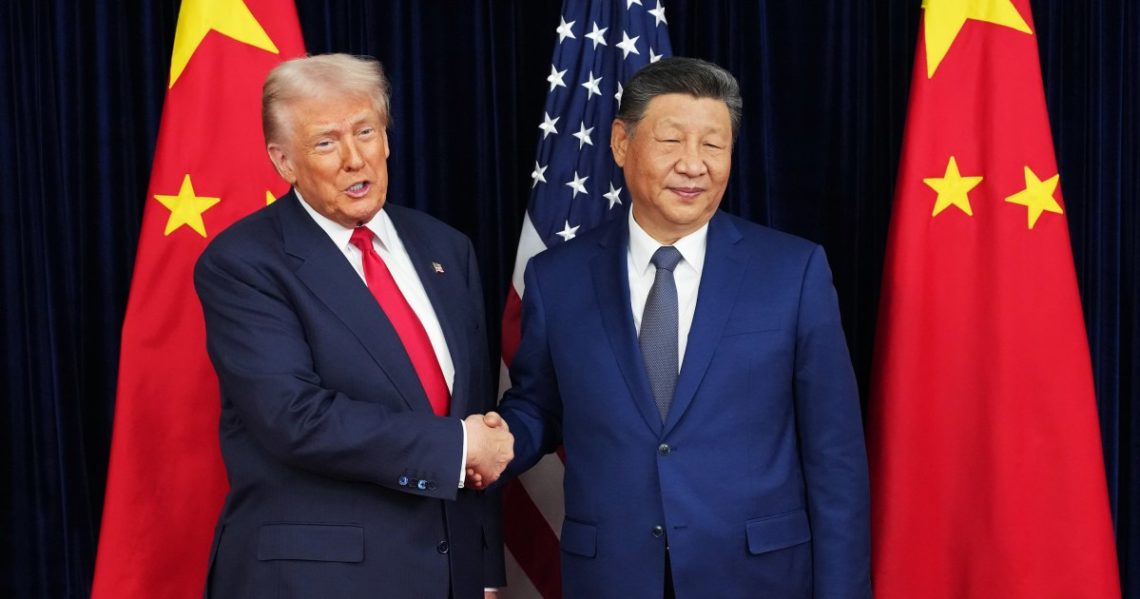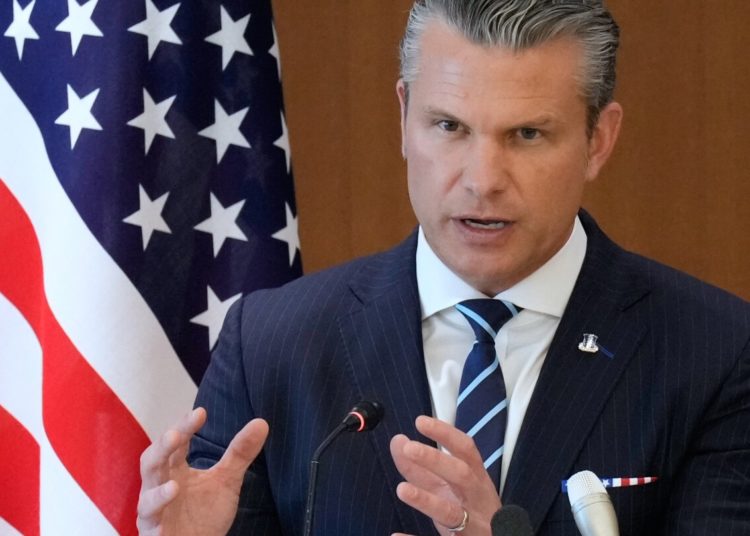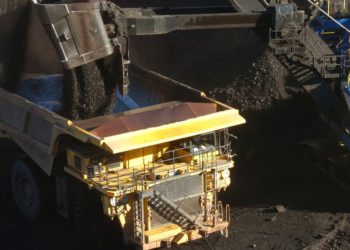Gyeongju, South Korea – Donald Trump and Xi Jinping’s trade truce in South Korea has left observers to debate which leader came out on top.
But on the shifting balance of power between the leaders, there is practically no disagreement.
Xi entered Thursday’s summit with the US president in a far stronger bargaining position compared with their last face-to-face meeting in 2019 – and he left their talks with some rare concessions in the form of a partial rollback of technology-related export controls.
While Trump and Xi’s meeting on the sidelines of the APEC summit was full of handshakes and niceties, the Chinese leader himself appeared to stress their equal status, invoking the image of two captains at the helm of a ship.
“In the face of winds, waves and challenges, we should stay the right course, navigate through the complex landscape, and ensure the steady sailing forward of the giant ship of China-US relations,” Xi said.
China believes it is “far, far closer to a peer now”, said Dexter Roberts, a non-resident senior fellow at the Atlantic Council’s Global China Hub.
“I think China has definitely increased its stature and the US has diminished its stature,” he told Al Jazeera.
Since Trump launched his first trade war with China in 2018, Beijing has fortified the Chinese economy to better withstand US pressure and bolstered its ability to apply pressure of its own on Washington.
Soon after the Trump administration dramatically expanded the scope of its export blacklist to include thousands of Chinese subsidiaries last month, Beijing announced that companies anywhere in the world would need approval to export goods containing even trace amounts of its rare-earth metals.
The move signalled Beijing’s willingness to leverage its effective stranglehold on the critical minerals – which are used in manufacturing everything from smartphones to electric cars and fighter jets – to defend its interests.
With China controlling about 70 percent of rare earth mining and 90 percent of separation and processing, the restrictions had raised the spectre of potentially catastrophic disruption to global supply chains.
“Beijing’s ability to use export controls on rare earths as leverage has been decisive in shifting the balance of negotiating leverage,” Gabriel Wildau, a senior vice president at global business advisory firm Teneo, told Al Jazeera.
“Beijing’s leverage over global supply chains will serve as a restraint on other governments considering tariffs, export controls, or other coercive measures against China,” Wildau said, adding that it was not clear that China “intends to go on the offensive”.
China had also strengthened its hand ahead of the summit by dramatically reducing its reliance on US agricultural products, particularly soya beans.
By the time China stopped buying US soya beans in May, amid tit-for-tat trade salvoes between Washington and Beijing, it had already been able to more than halve the proportion of American beans among its imports by turning to Brazil and Argentina.
China’s effective embargo dealt a heavy blow to farmers in states across the midwestern US, including Iowa, Nebraska and Indiana, posing a political liability to Trump’s Republican Party ahead of midterm elections in 2026.
Roberts, the Atlantic Council fellow, said China had learned to manipulate Trump’s “transactional nature and proclivity”.
“I think they figured out that Trump has certain things he really wants,” Roberts said.
“And I think the US president finds legitimacy through deal-making and China is ready to make deals if that’s the best way to get what they want in their relationship with the US.”
“I think they played this all very well to their benefit,” he added.
While China is set to resume purchases of US soya beans and delay planned export controls on five of its 12 rare earths under the truce – controls on the other seven, announced in April, remain in place – the agreement largely restores the countries’ relations to the status quo that existed before Trump unveiled his crippling “liberation day” tariffs in April.
The one major concession that predates Trump’s April escalation in the trade war is one that benefits China: a reduction in his fentanyl-linked tariff from 20 percent to 10 percent.
Ja Ian Chong, an associate professor of political science at the National University of Singapore, said that while China had strengthened its hand over the last decade, it was difficult to predict that either superpower would gain a definitive edge in their heated strategic rivalry.
“The US had an advantage with technological controls the last time around. Then the PRC found a way around and weaponised rare earths,” Chong told Al Jazeera, referring to the abbreviation of China’s official name, the People’s Republic of China.
“Similarly, the US will adjust in future and find something else. That’s the way these things work.”
In China, some analysts are far less equivocal.
Wang Wen, dean of the Chongyang Institute for Financial Studies at Renmin University of China in Beijing, said the power dynamic between China and the US had transformed since Trump’s first term and his trade war could “now be declared a failure”.
“China’s strength has compelled the US to learn respect,” Wang told Al Jazeera.
“The two nations have truly entered an era of equality. Looking ahead, although friction between the two countries will persist, the era in which the US could unilaterally contain and suppress China is over.”
The post In Trump-Xi summit, a shifting US-China power dynamic on display appeared first on Al Jazeera.




